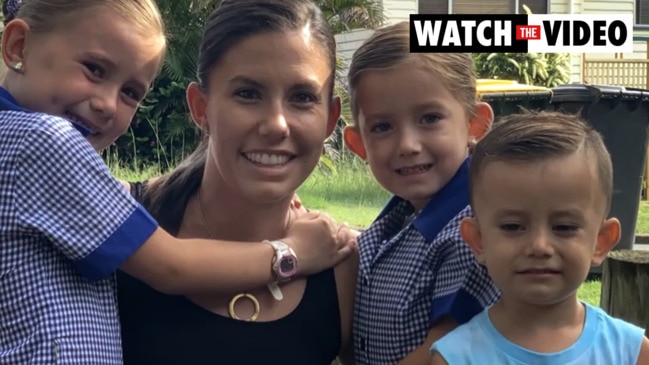Queensland study reveals horror rise in men threatening to burn their partners alive
The horrific 2020 murders of Hannah Clarke and her children have led to an increase in abusers threatening to burn their partners alive, a new study has found.

Domestic and family violence perpetrators in Queensland are increasingly threatening to set their current and former partners alight, a new study has found, with cases spiking after the horrific 2020 murders of Hannah Clarke and her children.
The report, co-authored by UQ TC Beirne School of Law senior lecturer Joseph Lelliott and associate lecturer Rebecca Wallis, details testimonies from seven non-government domestic and family violence service providers in the state’s southeast.
Direct and implicit threats of dousing are a form of coercive control that has not been formally studied before.
But they are on the rise: one participant told the survey of 17 workers last year that abusers sent the stories of Clarke – whose three children were burned alive in their car in February 2020 by her estranged husband – and Kelly Wilkinson – who was set alight in her Gold Coast backyard last April – to their partners as a means of telling them, “That’s what I’ll do to you”.
“Anecdotally, there have been cases where perpetrators have directly referenced the cases of Hannah Clarke or Kelly Wilkinson when they make threats, saying, ‘You’re going to end up just like her’, or saying something along the lines of, ‘That’s what you’ll get’ if news about them comes on,” Dr Lelliott told news.com.au.

“It appears that media reports about these cases, and ones like them, may lead to ‘copycat’-like behaviour, but may also be used as a tool of abuse themselves.
“Some interview respondents noted that perpetrators may also, for example, leave print outs of news stories concerning Hannah Clarke and the children around the house, or send them to ex-partners.”
The majority of participants in the study reported that cases of dousing threats within their services had become more prevalent over the past two or so years. And while no empirical measures exist yet, reasons may include an increased awareness among workers, and an increased fear among victims that such threats could be part of a pattern of escalating violence leading to murder.
“People are far more aware of it and that’s why there are so many more women, I think, talking about it,” one worker noted.
“Because now they’re really fearful and they’ve seen the consequences of that kind of threat being carried out.”


Another stated that they “see a really high prevalence of these kinds of threats, absolutely”.
“Different kinds of levels, different kinds of threats, but we do,” they added.
“So what we see most commonly are threats to burn the house down, threats to burn family and friend’s houses down, that sort of thing.”
“I actually have supported a woman whose respondent actually doused himself in petrol and threatened to burn himself at their family home where their children slept. Basically, yeah, well, it scared the hell out of her anyway,” one worker said.
“So, he did not actually burn himself because she managed to call triple-zero straight away. [But] the impact on her was really profound, because the smell of the petrol lingered for months.
“The location where he doused himself was actually close to the gas tank. So, he could have just killed everyone.”
What makes these threats – both implied and explicit – particularly “insidious”, Dr Lelliott and Dr Wallis noted in their findings, is that these “behaviours could be perceived as innocuous without an understanding of the broader context of the relationship”, but “almost always” occur in the context of an escalating pattern of “serious” domestic and family violence.
“I’m finding that it’s one of many elements. It’s not ever a stand-alone,” one worker said.
“Like they don’t just threaten to burn the house down or burn somebody – most of the time it’s because there is a domestic violence order (DVO), the client has left the relationship so there’s an escalation in the violence, and therefore it does escalate to the threats of burning either the house down, themselves or the client and the children.
“But usually there’s a lot that’s happened before it actually escalates to that point.”

Another, echoing the sentiment, noted the threats are “almost always just after separation”.
“So it’s about that not accepting that the relationship is over, and going into revenge and retaliation mode,” they added.
Their severity is also amplified by the accessibility of accelerants like petrol which, unlike the purchase of a firearm, are seen as “normal” household items.
Dr Lelliott told news.com.au that the prevalence of the study’s findings indicate “that there does need to be greater awareness of dousing threats – and indeed the use of fire generally – as a form of domestic and family violence and as a pattern of coercive control”.
“Some of our findings indicate that the severity of these threats is not always recognised, particularly by police,” he said.
“This work is, of course, preliminary at this point. We will release further papers in the future.”






